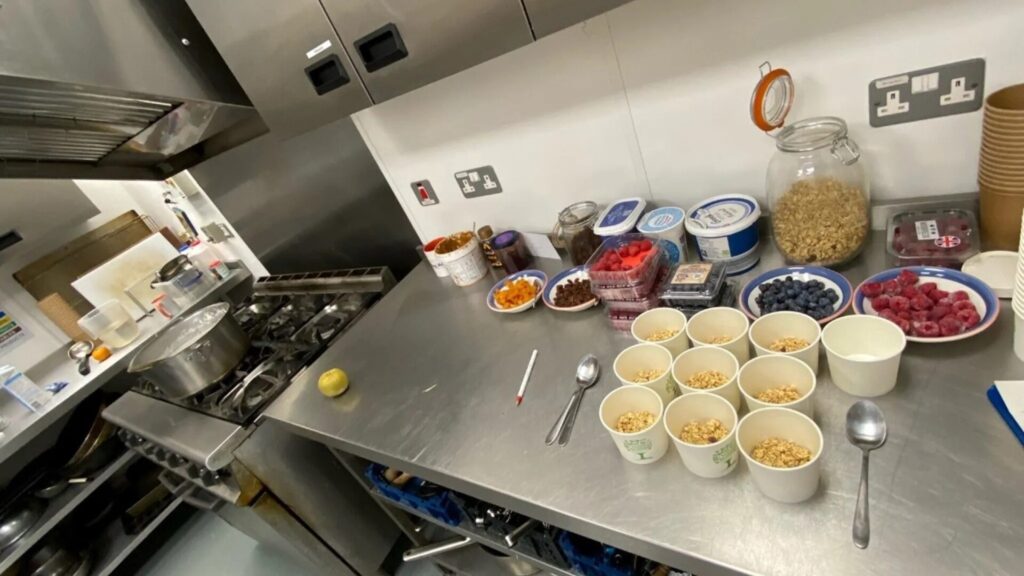Natasha Almond is a Senior Programmes Coordinator at Local Trust, where she champions resident-led partnerships across the North of England. She works closely with communities to build the structures and processes that give residents genuine control over decision-making. By identifying each area’s needs, Natasha designs targeted support—offering training, mentorship and expert advice on governance, social infrastructure development and strategic stakeholder engagement—to strengthen local capacity, boost confidence and ensure sustainable, community-driven change.
What if the key to levelling up our most disadvantaged places isn’t just about big infrastructure or national strategies — but the people living in our streets, running youth clubs, building trust, and bringing neighbours together?
Fresh research from Local Trust, 3ni, OCSI and Shared Intelligence shows that resident-led neighbourhood initiatives aren’t just nice to have. They work better than many of us might expect.
At a time when Yorkshire and the Humber’s regional leaders are pushing for inclusive growth and better community outcomes, this new analysis offers timely evidence that neighbourhood-scale action can be a powerful engine of social and economic change.
What the research shows
The Everybody Needs Good Neighbourhoods 2 study used a robust method known as “counterfactual analysis” comparing 29 deprived neighbourhoods with resident-led initiatives (such as those funded by the Big Local programme) with 29 similarly deprived areas without them. The comparison looked at a decade of data, focusing on seven key indicators including worklessness, child poverty, crime, house prices, and local business activity.
Across all indicators, areas with neighbourhood-based initiatives performed better. In four of the seven cases, the difference was statistically significant. In plain terms: neighbourhoods where residents had power, resources and long-term support did better over time.
Here are some highlights:
- Crime fell faster in Big Local areas—particularly overall crime and criminal damage.
- Child poverty grew more slowly in Big Local areas compared to similar places without interventions.
- Business activity increased more in those areas, suggesting grassroots efforts also foster local economic growth.
- House prices rose, indicating greater neighbourhood appeal.
These aren’t isolated wins. They’re consistent signals that place-based regeneration works when it’s led by the people who live there.
What’s happening on the ground?
Tang Hall Big Local transformed a diverse York neighbourhood by weaving high-quality food provision, collaboration and resident leadership into lasting “good neighbour” networks.
Anchored at Tang Hall Community Centre—which received kitchen and facilities upgrades—the Partnership launched initiatives like a weekly “pay what you feel” Breakfast Club, community lunches and six-week cookery courses.
During COVID-19, these systems enabled the swift distribution of 2,766 food parcels and 8,500 meals. A resident-led CIO formalised governance and managed funds alongside York City Council and agencies, fostering co-produced services, support hubs and youth work funded through North Yorkshire Youth. Approximately 70 volunteers contributed over 1,350 hours in 2020–21, while “Made in Tang Hall” grants nurtured social enterprises such as Food Circle.
This holistic approach—grounded in transparency, mutual support and enterprise—boosted wellbeing, reduced barriers to services, empowered young people and strengthened community assets. By embedding collaboration, Tang Hall exemplifies how “everybody needs good neighbours” to build resilient, connected places.

Why this matters for Yorkshire and the Humber
For policymakers in our region, whether in West Yorkshire, South Yorkshire, or Humber, this evidence should spark serious interest. Deprivation in Yorkshire is often concentrated at the neighbourhood level, even within relatively prosperous cities or districts. That means local policy can miss those communities unless we zoom in.
Regional strategies often operate at a combined authority or city-wide scale, yet the neighbourhood is where life happens and where policy can be most visible and impactful.
This report makes a strong case that hyper-local, resident-led approaches aren’t just a nice complement to regional economic plans, they should be part of the core strategy.
The government’s Plan for Neighbourhoods and the Community Wealth Fund are steps in this direction. But local authorities, combined authorities, funders and universities in our region should see this as a call to go further.
Three takeaways for regional policymakers and researchers
- Neighbourhoods matter. They’re not too small to count, they’re the scale where change sticks. Whether it’s reducing crime, tackling poverty, or boosting local business, the evidence shows neighbourhood-led action gets results.
- Trusting residents works. Long-term funding and genuine community leadership, not just consultation, can reverse decline and unlock community energy.
- Local research engagement can make a difference. The Yorkshire Policy Engagement and Research Network (Y-PERN) has an opportunity to elevate this work: connecting local authorities with researchers who understand the nuance of place and ensuring neighbourhood voices are heard in regional plans.
The bottom line
If we’re serious about inclusive growth, tackling inequality and improving life chances in Yorkshire and the Humber, we need to shift more attention and resources to neighbourhoods. Not just as service recipients, but as active partners. Read the full research report here
Please contact [email protected] for further information
Y-PERN would like to thank Natasha for sharing her insights.



